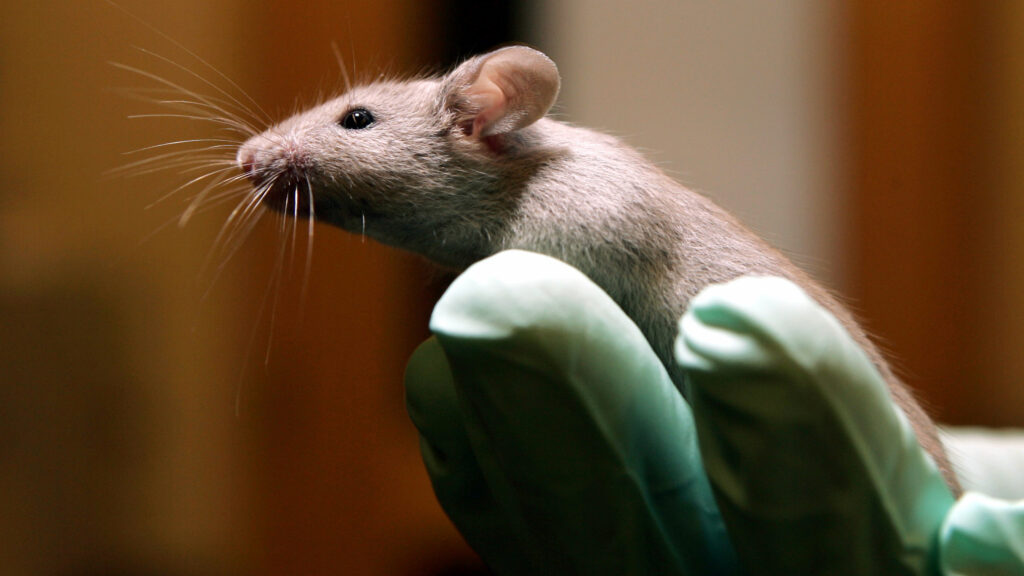Science
Advocating for Animal Models in Biomedical Research Advances

The recent initiatives from the Food and Drug Administration (FDA) and the National Institutes of Health (NIH) aim to reduce and eventually replace animal testing in biomedical research. These efforts promote “new approach methodologies,” including lab-grown human models and computational technologies. While these alternatives are seen as advancements, there is a growing concern that the value of modern animal models could be overlooked, despite their significant contributions to biomedical discovery.
Animal models, particularly mice and rats, account for approximately 95% of research animals used in laboratories. Their importance in foundational biomedical discoveries is well-established. Despite criticisms regarding their ability to predict human outcomes, contemporary mouse models have advanced considerably. These models can now be genetically modified to include human genes, cells, and tissues, enabling researchers to study human biology in a living organism rather than solely in vitro.
For instance, the drug fialuridine was tested in clinical trials in 1993 and led to liver failure in nearly half of the participants. Subsequent research demonstrated that “humanized” mice, which incorporated human liver cells, could accurately predict similar toxicities, underscoring the relevance of animal models in anticipating drug effects.
While alternatives like lab-grown human liver models are beneficial, they cannot fully replicate the complex interactions between different organs or effectively model multifaceted human diseases. A prime example is CAR T-cell immunotherapy, which utilizes a patient’s immune cells to combat cancer but can induce toxicities impacting multiple organs, such as the brain. Research utilizing mice with human immune systems has successfully identified the causes of these severe effects, paving the way for safer clinical applications.
Moreover, mice can be engineered to reflect patient-specific genetic variants, enhancing our understanding of complex conditions like autism and aiding in the development of personalized therapies for genetic disorders. In specific cases, cancer tissue removed during surgery can be implanted into mice, allowing oncologists to test various treatments and tailor follow-up care to the individual patient.
In a shift towards more realistic research environments, scientists are employing “naturalized” mice exposed to diverse environmental factors. This approach helps researchers capture the effects of environmental influences on human physiology and immune responses. These enhanced models have successfully recreated adverse drug reactions in autoimmune and inflammatory conditions that previously failed to manifest in human trials.
The potential of these naturalized models was highlighted in a workshop hosted by the NIH’s National Institute of Allergy and Infectious Diseases in 2024, where researchers presented data supporting their utility in advancing health and understanding human diseases. Additionally, advances in genetically modified pig organs for human transplantation are emerging as potential solutions to the donor shortage for patients with end-stage diseases.
Reducing investment in animal models now could hinder vital advancements and leave researchers ill-equipped to tackle complex medical safety issues that may arise in the future. The FDA has acknowledged that “all possible side effects of a drug can’t be anticipated based on preapproval studies,” emphasizing the need for tailored animal models to investigate unexpected adverse events post-approval.
Investing in and refining modern animal models can ultimately reduce the number of animals needed in research. Enhanced preclinical studies that accurately predict human outcomes can minimize repetitive experiments that often yield no beneficial results. The focus should not be on choosing between animal models and human-based methodologies; rather, the integration of both is essential for effectively studying human conditions.
The most promising translational research arises from a combination of animal models with human-based and computational approaches. These methodologies provide complementary insights that improve our understanding of diseases and treatment options. Additionally, sophisticated artificial intelligence tools can leverage animal data to identify biologically relevant patterns that would be unattainable in human studies.
As regulatory bodies and funding agencies push for alternatives, it is crucial to recognize that today’s animal models are significantly improved from those that previously struggled to predict human responses. Abandoning these advances now would be detrimental to scientific progress and to the patients who stand to benefit from ongoing research.
To accelerate biomedical research and develop effective treatments, agencies should invest in systems that unite animal models with emerging methodologies. The integration of diverse research strategies will enhance our ability to deliver breakthroughs that improve patient outcomes.
-

 Technology5 months ago
Technology5 months agoDiscover the Top 10 Calorie Counting Apps of 2025
-

 Health2 months ago
Health2 months agoBella Hadid Shares Health Update After Treatment for Lyme Disease
-

 Health3 months ago
Health3 months agoErin Bates Shares Recovery Update Following Sepsis Complications
-

 Technology4 months ago
Technology4 months agoDiscover How to Reverse Image Search Using ChatGPT Effortlessly
-

 Technology1 month ago
Technology1 month agoDiscover 2025’s Top GPUs for Exceptional 4K Gaming Performance
-

 Technology2 months ago
Technology2 months agoElectric Moto Influencer Surronster Arrested in Tijuana
-

 Technology5 months ago
Technology5 months agoMeta Initiates $60B AI Data Center Expansion, Starting in Ohio
-

 Technology5 months ago
Technology5 months agoRecovering a Suspended TikTok Account: A Step-by-Step Guide
-

 Health4 months ago
Health4 months agoTested: Rab Firewall Mountain Jacket Survives Harsh Conditions
-

 Lifestyle5 months ago
Lifestyle5 months agoBelton Family Reunites After Daughter Survives Hill Country Floods
-

 Technology4 months ago
Technology4 months agoHarmonic Launches AI Chatbot App to Transform Mathematical Reasoning
-

 Technology3 months ago
Technology3 months agoUncovering the Top Five Most Challenging Motorcycles to Ride




















